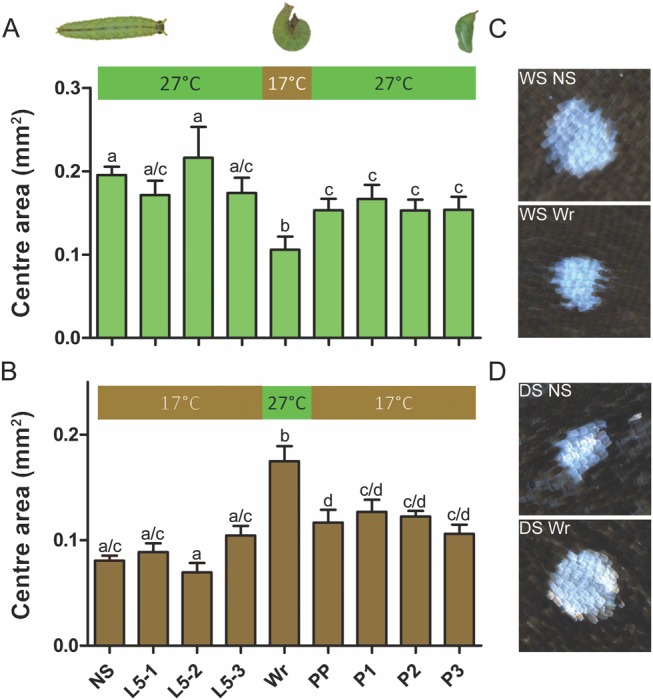Fig. 2.

Temperature-shift experiments point to wandering (Wr) stage as the most important temperature-sensitive developmental stage for eyespot center size determination. Horizontal axis labels refer to the stage of development at the start of the 48-h shift; NS, nonshifted controls. L5 1–3 represent stages in larval 5th instar; Wr, wandering stage; PP, prepupal stage; P1–3 represent stages in pupal development. (A) Animals were reared at 27 °C throughout development, except for a 48-h window, where they were moved to a lower temperature of 17 °C. (B) Animals were reared at 17 °C throughout development, except for a 48-h window, where they were moved to a higher temperature of 27 °C. N = 20 for each data point. Error bars represent 95% CI of means. (C) Representative eyespot center images for nonshifted WS animals, contrasted with those shifted to 17 °C during Wr stage. (D) Representative eyespot center images for nonshifted DS animals, contrasted with those shifted to 27 °C during Wr stage. Groups that do not share the same letter superscripts are significantly different from each other.
